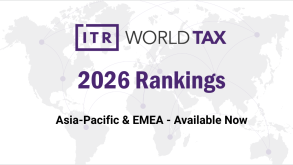Today we are at a turning point in tax. There are enormous issues affecting and disrupting our industry – issues that layer new complexities, pressures and opportunities onto businesses. The new digital tax function is now evolving at great pace to become a strategic component of enterprise transformation, with tax executives simultaneously having to act as a business adviser, savvy technologist and tax diplomat – bridging the gap to the C-suite and representing tax's unique value proposition in the digital age.
Legislation driving change
For the past 12 months, the political, social and economic fabric of many countries has been characterised by disruption, increased nationalism and seismic shifts that many thought were unimaginable. As these changes play out, they will be key drivers for the trend toward digital taxation, and the technology required to support that movement.
In the US, significant tax reform for individuals, entrepreneurs and corporations is taking shape. The last five presidents have all moved major economic legislation containing tax changes in the first year of their presidencies, and the Trump administration is likely to be no different. The House Republican Blueprint for Tax Reform outlines a provision for border adjustment taxation that is riveting the business community in the US and abroad. The border adjustments would exclude US exports from the tax base while including imports, representing a major departure from the current corporate income tax. On April 26, the Trump administration outlined a tax reform plan calling for a 15% business tax rate and a one-time tax on the repatriation of foreign earnings of US companies at an unspecified rate. Specifically for individuals, income tax rates would be set at 10%, 25% and 35%; these differ from Trump's campaign proposal rates of 12%, 25% and 33%, which were aligned to those in the House Blueprint on Tax Reform. The administration has stated that throughout the month of May, listening sessions will be held with stakeholders to gather their input, and work will continue with the House and Senate to develop the details of a plan that provides massive tax relief, creates jobs and makes America more competitive.
Outside the US, we have seen much legislative change. Countries like the UK have modified their tax systems dramatically, adding a patent box legislation and numerous other provisions to broaden the base of taxation. Similar action has been taken in many other European countries including Belgium, Hungary, Luxembourg, the Netherlands and Spain.
In India, the goods and services tax (GST) reform will introduce a uniform indirect tax structure across the country, moving away from a model that empowers both the federal government – through excise duty and services tax – and state government – through VAT on goods and entry tax. This move is an extremely significant event for India and will have an impact on all segments of the economy. Expectations are that it will widen the tax base, do away with the multiplicity of taxes and the cascading effects, minimise competitive distortions and encourage better compliance. Similarly, the Shura Council in Saudi Arabia ratified the Gulf Cooperation Council (GCC) Value Added Tax (VAT) Framework Agreement in April. Officials at the Saudi Arabian Ministry of Finance have indicated that the VAT regime will be applicable from January 1 2018, and a 5% levy will apply to goods and services as set forth in the GCC agreement. These official affirmations are in line with similar pronouncements made by government officials from other GCC member states.
Authorities are responding to digitisation
Governments worldwide believe they are losing billions of dollars in tax revenue each year through non-compliance, evasion, fraud and non-collection. Faced with heightened public and political scrutiny, tax authorities are under pressure to take action to increase transparency and close the tax gap. Moreover, as their own operating budgets are cut, they need to find ways to do more with less. As the global tax environment becomes increasingly complex, new solutions are needed.
Starting on January 1 2015, taxpayers in Russia were required to submit VAT transactional data along with their electronic VAT returns. That year, domestic VAT revenues increased by more than 12%, the equivalent of around $4 billion (RUB 267 billion). Was this driven by an improving economy? Perhaps more likely is the fact that the Russian Federal Tax Service had delivered on its vision for a nationwide VAT analytics platform.
The experience of the Russian tax authority provides one example to illustrate the enormous potential of advanced analytics in tax administration. Using various statistical and data-mining technologies to identify anomalies, unusual relationships and patterns, tax agencies can address a wide spectrum of non-compliance behaviours in a proactive, targeted and cost-effective way.
We saw growth in 2016 in the number of countries moving to require more transactional VAT data. Spain, for example, launched a new digital VAT reporting system and expanded its monthly VAT filing requirements to include digital submission of all invoices, customs documents and accounting documents. These changes will come into effect from July 1 2017. And as recently as December 2016, Italy enacted a new law – referred to as "Spesometro" – requiring quarterly communication of VAT invoice data.
While VAT is one element, there are numerous other data sources including those related to country-by-country reporting, transfer pricing master and local files, and mandatory disclosure requirements including SAF-T that are all being impacted by the increased scope of data requirements and the frequency with which data must be submitted.
Many tax authorities have invested in digitalisation, data integration and analytics, and several have already improved service, administration and compliance. However, much still needs to be done to leverage analytics as a standard practice across tax-related activities. Companies too will need to make major investments in their technology and data analytics infrastructures to ensure they can meet the challenges – and opportunities – of providing information on an almost real-time basis.
Technology is changing taxation processes
Accelerated by technology, digital is a disruptive megatrend that is enabling real-time access, real-time analytics and heightening the expectation for real-time visibility. Responding to this, the tax function needs to increasingly operate across a number of fronts.
Organisations must ask how technology can be leveraged to help build an operationally more effective tax function and meet the requirements of real-time data. New technologies, such as blockchain, robotics process automation (RPA) and artificial intelligence (AI) can offer a new era of visibility into transactional data and unlock value, help manage risk, improve efficiency and provide critical business insight.
Blockchain, for example, creates an environment in which every transaction is open, verified and available in real-time. Its application in tax has the potential to move the function from retroactive analysis and historical financial information gathering to a position where transactions, expenses, assets and liabilities can be recorded in real-time and publicly scrutinised. Mistakes, risk and fraud could, in theory, be eliminated.
RPA is another step in the evolution of business process bundling and outsourcing, facilitating a virtual workforce of software robots that can work faster, more inexpensively and more accurately than human beings. TaxBots are already being used to transform tax function operations, helping to accelerate indirect tax compliance, tax provision, and sales and use compliance to name just a few activities.
The benefits of RPA promise to be significant and universal for both companies and professionals. The promise of companies achieving faster services through the adoption of RPA, allows professionals to shift the work paradigm by being able to focus on value-added efforts and contributing more strategically.
Similarly, AI is delivering many benefits for the tax function, such as improved decision-making. AI will be loaded with information such as tax codes, case law and administrative guidelines, and will be able to make certain decisions on this basis.
But what does all of this mean in terms of the day-to-day business impact? By improving the connection between both financial systems and historical transactions, technology can provide the foundation for real-time data that tells the most accurate tax story to both the organisation and relevant tax administrations. It can help to provide more robust predictive analytics and help organisations better address global requirements around key issues such as transfer pricing and initiatives like BEPS.
Companies need to decide if they are going to manage this technology disruption internally or whether they will outsource to others. And in contemplating that question, key developments around the trend toward process outsourcing discussed below could be critical.
Tax business process outsourcing is here to stay
The pace of legislative change globally and in the US, combined with the application of disruptive technologies, will result in companies evaluating which aspects of the tax function should stay in-house and what concerns should be outsourced to a provider that could potentially do it better, faster and/or cheaper. By combining the attributes of resources-on-demand through business process outsourcing (BPO) with integrated, value-oriented technology such as RPA, companies will have the agility required to manage their global tax footprint and compliance needs more effectively than at any time in history. And a technology savvy business may find that it is more efficient to outsource these capabilities to a third party than to build it in-house. The level of tax outsourcing is estimated to stand at about $25 billion in 2016 and is expected to grow as much as 5% per year through 2021. This will certainly be a trend that is here to stay.
Traditional outsourcing models that rely on offshoring processes to remote locations may no longer be fit-for-purpose and may not be reliable enough to successfully navigate the many issues that the tax function of the future will have to deal with. Going forward, we believe companies will increasingly look to third-party providers with leading tax expertise, a global infrastructure and specialist tax technology capabilities that enable them to confidently outsource certain core tax functions without disrupting operations, keeping outsourced operations close to their business and helping them to operate effectively in this ever-changing environment.
Once strategically defined, BPO can help the tax function adapt to changing business and regulatory environments in a scalable and cost-effective way. It will allow companies to focus on the core aspects of their tax business while delegating administrative and back-office functions, and enabling internal talent resources to be deployed on more business-critical and value-add work.
Bringing it all together
In today's dynamic environment, organisations must not only have the infrastructure – talent, technology, policies and processes – in place to manage legislative change, but they also need to be agile and have a culture that embraces a greater degree of transparency. The tax function is certainly being elevated within organisations and a move from a back-office approach to increased board involvement in their company's tax strategy is more prevalent, particularly against a backdrop of greater public disclosure, more widespread interest in the tax affairs of corporations and reputational risk mitigation.
Effective ongoing communication between a company's tax and finance leaders, the C-suite and the board is essential. Effective automation of processes requires a coordinated approach, while centralisation also promotes consistency, which has become significantly more important because of increased transparency, information sharing and controversies involving multiple locations.

|
|
Jon DobellGlobal compliance and reporting leader, tax EY Website: www.ey.com/gl/en/services/tax Jon Dobell has over 20 years' experience in corporate and international tax, working in Asia and Europe. He specialises in advising clients on managing their global and local compliance and reporting requirements. Jon has a strong background in tax and finance processes, software and systems, and advising clients on how best to structure their functions globally. Jon is married to Kirsten with three children, and in his spare time enjoys vintage sports cars and all things motorsport. |









